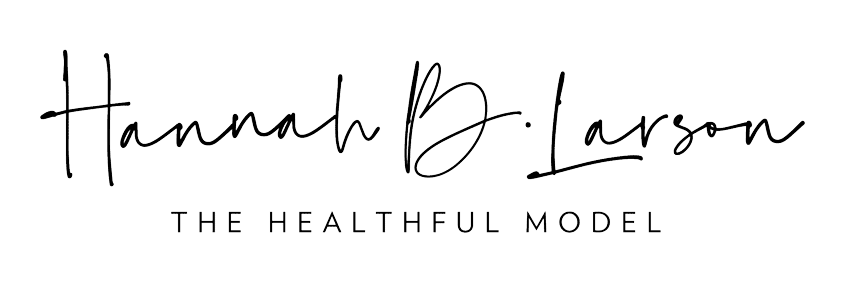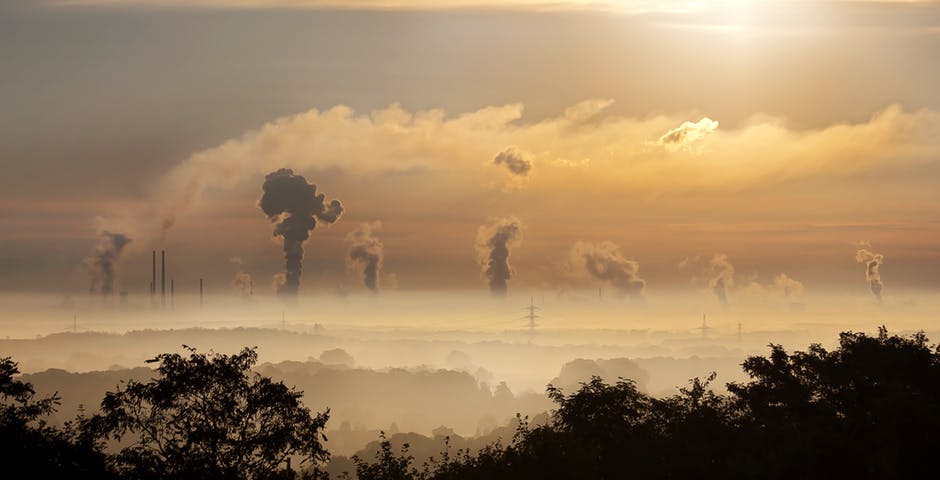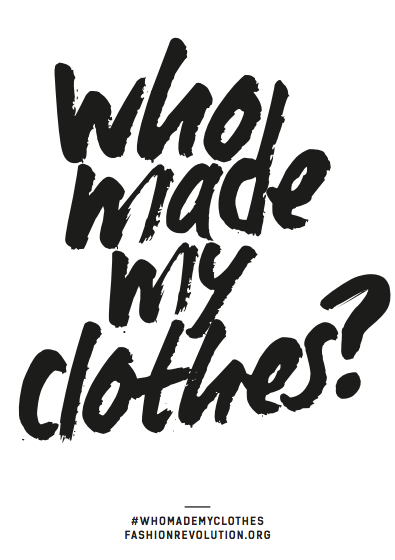On the quest to find something impactful to write about in honor of Earth Day, I began by assessing the sustainable practices I’ve implemented over the years. To lessen my environmental impact, I choose to eat a primarily vegan diet. In addition, I recycle religiously, compost viable food scraps, drive a hybrid and am never without reusable shopping totes. Staying informed on current and innovative ways to reduce my carbon footprint has become second nature. It wasn’t until I watched the documentary, The True Cost, that I realized there was a tremendous piece of the sustainability puzzle that I had long overlooked. Fashion.
Andrew Morgan, filmmaker and director of The True Cost, felt compelled to investigate the dark side of the textile industry after the Rana Plaza disaster in April of 2013. Morgan’s film premiered in 2015 exposing the aftermath of that April day when insufficient building maintenance caused the clothing factory to collapse, killing over 1,100 Rana Plaza employees and seriously injuring 2,500 others. The documentary reveals more than just the unfathomable inequality and inexplicable working conditions that garment workers are subjected to, it also sheds light on the detrimental impact that the fashion industry has on the environment.
The data is staggering. Fashion manufacturing is estimated to be one of the highest polluting businesses in the world. In fact, the industry’s carbon footprint is so pervasive; its total impact has yet to be accurately quantified.
Environmental harm starts from the beginning of textile production when fibers are sourced. Natural materials (such as cotton) are water-intensive and heavily reliant on pesticides and fertilizers. The chemical runoff then pollutes groundwater and air and decreases soil fertility. Synthetic materials (such as polyester and nylon) also require colossal amounts of water. Synthetics are made from petrochemicals that are harmful to the environment and unable to biodegrade. Later in production, printing, bleaching and dyeing processes come into play. It is said that these are the three most chemical and energy intensive steps in the manufacturing line. Cloth is often bleached using dioxin-producing compounds and the dyeing process uses fixatives (usually heavy metals) that often contaminate sewers and then rivers.
Not only are scientists interested in understanding the negative environmental impact of clothing production, but also the effects the chemicals used to treat garments have on human health. Unlike chemicals used in food, no single U.S. federal agency is responsible for overseeing chemicals used in the clothing industry. Laborers working in textile factories are constantly exposed to a high volume of hazardous substances, toxic by-products and cloth particles.
Fast fashion companies are the biggest perpetrators of unethical garment production. Their business model thrives on pricing clothing and accessories at a fraction of the competitor’s price. This emphasis on high volume and low quality is pioneered by brands such as Zara, H&M, Forever 21 and Top Shop. Conglomerates such as these can sell $2.00 tank tops and $8.00 skinny jeans because they choose to outsource labor in countries where working wages are minuscule and the safety and well being of employees is not their responsibility.
Nina Garcia, fashion journalist and Marie Claire creative director, once said, “Style is a deeply personal expression of who you are, and every time you dress, you are asserting part of yourself.” If that’s so, I want to assert compassion; I don’t want the clothing I wear to be connected to unethical practices and the suffering of others. If that’s so, I want to assert consciousness; I want to know the journey my clothing took before it reached my closet. And if that’s so, I want to assert intelligence and choose clothing brands that align with my personal ethics rather than what’s in season or on-tend.
The perplexing and merciless wheel of textile consumption spins so quickly leaving us little time to reflect on our actions. This dizzying affect is a result of efficacious marketing designed to make consumers feel inadequate. The True Cost is a reminder that clothing is ancillary to our other and far more important traits. The traits that allow us to think critically, choose wisely and live with intention. Shifting values to conscious consumption is a positive stride towards a sustainable and more ethically responsible future.
T I P & T R I C K S:
Value and take care of the clothing that you already own.
- 25% of the carbon footprint of a garment comes from the way we care for it. To assure your clothing lasts its intended lifespan, follow washing instructions on the attached garment tag. Also, reassess how often you need to wash specific pieces.
- Choose a natural, plant-based detergent that contains biodegradable surfactants which are gentler on clothing and better for the environment.
- Hang dry your clothes to extend their life, reduce energy and cut costs.
Choose quality over quantity.
- Pause and ask yourself, “Do I really need this?” or, “How much use will I get out of this item?”
- Buying fewer quality pieces will reduce the amount you spend on superfluous garments that rarely get worn.
- Choosing quality pieces means saving money in the long run as you won’t be replacing them as frequently.
Shop smart:
- Buy vintage or second hand pieces. There are now dozens of online retailers that sell gently used luxury clothing and accessories. I like: The Real Real, Tradsey and ThreadUp.
- Support fashion brands with ethical practices such as Reformation, LA Relaxed and Alternative Appeal.
- Purchase items that transition from season to season. For instance, a lightweight trench coat can easily be worn from late spring to early fall.
W H A T C A N Y O U D O?
This week is Fashion Revolution Week which honors those who lost their lives in Rana Plaza tragedy and other garment factory disasters. The campaign slogan, ‘Who Made My Clothes?’ is a demand for greater transparency in the global fashion supply chain. Click here to learn more about how you can get involved.
Resources:
- The Environmental Protection Agency
- The True Cost
- The Ethical Fashion Forum
- The Good Trade
- Fashion Revolution
- The Clean Clothes Campaign
Books:
- Eaarth by Bill McKibben
- Naked Fashion: The New Sustainable Fashion Revolution by Safina Minney
- To Die For: Is Fashion Wearing Out the World? by Lucy Siegle
- This Changes Everything: Capitalism vs. The Climate by Naomi Klein
- Silent Spring by Rachel Carson
- Overdressed: The Shockingly High Cost of Cheap Fashion by Elizabeth Cline







3 Comments
Excellent article, Hannah. We all need to think deeply about the clothing we wear, the food we eat, how our lifestyle choices affect others and our planet. We can each make a difference by the way we spend our money…for instance buying organic food. It is up to each one of us.
Thank you for reading it! I agree wholeheartedly! 🙂
[…] a recent blog post I talked about the devastating impact that fast fashion has on both the environment and the […]